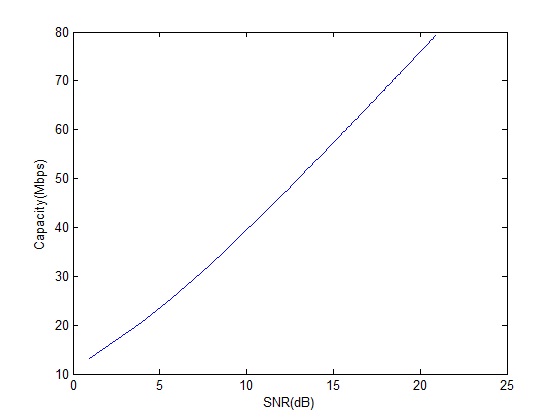In the previous post we calculated the Shannon Capacity of LTE as a function of bandwidth. We now calculate the capacity as a function of SNR (bandwidth fixed at 20MHz and signal power varied). We also use the concept of effective bandwidth to get a more realistic estimate of the capacity. The modified Shannon Capacity formula is given as:
C=B_eff*log2(1+SNR)
where
B_eff=Bandwidth*eff1*eff2*eff3*eff4
eff1=0.9=due to adjacent channel leakage ratio and practical filter issues
eff2=0.93=due to cyclic prefix
eff3=0.94=due to pilot assisted channel estimation
eff4=0.715=due to signalling overhead
B_eff=0.57*B
Therefore
C=0.57*B*log2(1+SNR)

Note: This is the capacity in a SISO channel with no fading.
Author: Yasir
More than 20 years of experience in various organizations in Pakistan, the USA, and Europe. Worked with the Mobile and Portable Radio Group (MPRG) of Virginia Tech and Qualcomm USA and was one of the first researchers to propose Space Time Block Codes for eight transmit antennas. Have publsihed a book “Recipes for Communication and Signal Processing” through Springer Nature.
3 thoughts on “Shannon Capacity of LTE (Effective)”
Hello ,
How we can calculate the inter-site interference in LTE for a user on the edge cell ? if we consider only interference from the first tier cells only , if we have a target bit rate for cell edge user ,we need to calculate the noise and interference to get SINR and to calculate the coverage right?
Thanks
Thank you Shaokn for pointing that out!
John
Where is log2 ?